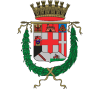Padua is one of the largest walled cities in Europe, and it possesses the longest stretch of sixteenth-century defensive walls to have remained almost entirely intact in their original form. All in all, there are eleven kilometres of walls, whose outline gives the city its recognisable shape.
Construction of the massive walls began in 1513, under the city’s military commander, Captain General Bartolomeo d’Alviano. The move came after the failed siege of the city in 1509 by the forces of the emperor Maximilian and the League of Cambrai, an event that determined the future course of European history: if Padua had fallen, Venice would have done so soon afterwards, bringing the independent Venetian Republic to an end.
Built in response to an emergency, the Padua city walls were an opportunity for military engineers to develop new ideas, as is shown by the great variety of form, size and internal structure in its nineteen bastions. These include both small and large circular towers (with casemates on one or two levels), various forms of rampart and demilunes, and the incomplete Castelnuovo [New Castle]. All of these are intact today, with their varying forms of galleries and casemates. Five of the original seven gateways in the walls are also intact, each of them a little architectural gem (two were designed by Giovanni Maria Falconetti).
For years the Comitato Mura [City Wall Committee] has organized staggered visits around the various parts of the walls, which enable visitors to appreciate them in detail. There are also plans to create a multimedia museum within the walls themselves, which will allow visitors to explore the history of this remarkable achievement of military engineering.
www.muradipadova.it
- DISCOVER
- LIVE
FOCUS
- GET INSPIRED
FOCUS
- INFO
- BOOK NOW












